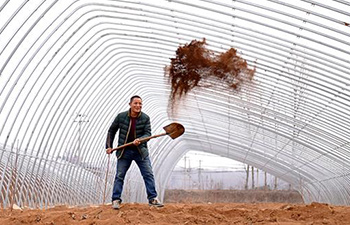CANBERRA, Feb. 18 (Xinhua) -- Australia's peak scientific body has developed an economically and environmentally sustainable method for producing phosphate.
As a key ingredient in fertilisers, the soluble phosphate industry is worth 73 billion Australian dollars (52.1 billion U.S. dollars) every year.
With food production needs continuing to grow worldwide, the demand for phosphate is also on the rise.
The new PyroPhos process, developed by the Commonwealth Scientific and Industrial Research Organisation (CSIRO), offers a simpler, safer and more efficient alternative to traditional processes by which the chemical derivative of phosphoric acid is produced.
"The PyroPhos smelting process uses high temperature to extract phosphate from ores, producing prized phosphate feedstock and a glassy gravel that can be used in road base construction and Portland cement," Keith Barnard, leader of the PyroPhos team, said in a media release on Monday.
"A major benefit of the process is that is can be used on lower grade ores giving phosphate miners and processors the opportunity to increase their productivity in an environmentally sustainable way."
The process emerged from decades of award-winning research by the CSIRO's Division of Chemical Engineering into SiroSmelt, a high-intensity smelting process.
Mark Muzzin, a director of PyroPhos, said that it was unique technology in the phosphate market.
"Our networks and investor base give us the ability to connect PyroPhos technology to the global phosphate industry," he said.
"We have had an excellent response from the industry and believe it has the ability to make a major impact."













